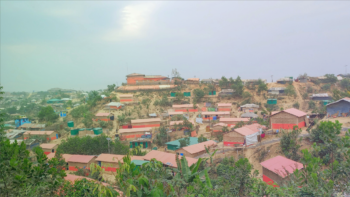

Managing the risks of international NGO payments
Understanding the risks and industry sectors in which you operate is critical to preventing delayed or blocked payments and boosting transaction success rates, as Sarah Louise Teschl, Head of NGO sales at Inpay explains.

How does a review by a banking partner typically work?
“When NGOs apply for a banking relationship in their home country, it’s generally to facilitate fundraising and everyday transactions. That bank then becomes their main means of making international payments, even though it was not the original intent of the relationship,” says Sarah Louise.
From the bank’s point of view, a banking review must distinguish between understanding the operations in the country where the NGO is based and fundraises. And the international operations of transferring funds overseas.
Not all banks are comfortable or conversant with the international part. Nor have the risk appetite for it. International NGOs operate in challenging environments, including worn-torn and poverty-stricken countries. They may be active across multiple jurisdictions, where oversight and technical capacity differs from their home market.
“So, there’s a world of difference between reviewing an NGO’s local business, typically pay-ins, against local legislation and regulation. And reviewing international business, typically payouts, in accordance with requirements in the respective countries,” comments Sarah Louise.
What are the consequences of this local vs. global knowledge gap?
If international payments – and high-risk ones at that – are outside a local or regional bank’s comfort zone. It helps explain why NGOs face difficulties in obtaining financial accounts in the first instance as well as high costs in maintaining them.
“At Inpay, we call this the ‘de-risking equation’. Banks are liable for customer activities in accordance with relevant regulations. If an NGO operates in high-risk or multiple jurisdictions, the perceived risks for a bank are high and the profitability low,” explains Sarah Louise.
Banks often request additional documentation or explanations for high-risk transactions to manage their risks. But NGOs may experience delays or even denials of funds transfers as a result.
There’s also the overhead in terms of time and effort for NGOs to provide additional information. This is the same for banks. They incur costs to collect and review the information, which eats into account profitability.
“If they don’t have a cost-effective, flexible and proportionate way of assessing risk, banks may de-risk NGOs altogether. This is how NGOs get stuck in a vicious circle of ‘de-risking’.”
How widespread is the of ‘de-risking’ problem?
It’s no small one – and goes to the difficult of risk management generally. During 36 hours of in-depth interviews commissioned by Inpay as part of independent research into the sector, decision-makers at the biggest NGOs complained of delays in opening accounts. They complained of denied or closed accounts, frozen funds, blocked donations, missing transfers and ‘black box’ payments,” says Sarah Louise.
NGOs are being denied entry to the financial system, de-risked and offboarded. They are financially excluded at a B2B level, which is concerning as downstream financial inclusion is an enabler of other developmental goals. It’s a target in eight of the seventeen 2030 UN Sustainable Development Goals, including eradicating poverty and hunger, promoting economic growth and reducing inequalities.
Two-thirds of US-based non-profit organizations working abroad face problems accessing financial services. That’s according to a report from the Charity & Security Network back in 2017. If anything, the situation around financial access, inclusion and requirements for NGOs has worsened over the last seven years.
More than 1-in-4 countries is now subject to sanctions by the US or Western governments. And 29% of global GDP is produced in sanctioned countries, says the Center for Economic and Policy Research.
At the same time, bank de-risking has pushed the average cost of sending $200 up to 6.25% as at Q1 2023, according to the World Bank. That’s more than two times the Sustainable Development Goal target of 3%.
NGOs are having to find alternative ways to make cross-border transfers. This may include moving money through less transparent, traceable and safe channels, such as exchange houses, money service bureaux (MSBs) or hawala.
Would a solution be having two banking relationships? One for domestic fundraising and holding funds on deposit locally, and a second for international money movement?
“That is what most NGOs do, although you can’t have a second bank relationship to cover everything. You would be looking at an exchange house or MSB, but these businesses tend to specialize in specific payment corridors. Securing global coverage in all the countries in which an NGO operates may be problematic,” comments Sarah Louise.
Inpay can partner NGOs to process international payments. We’ve effectively built our own proprietary network of global financial institutions. This makes it as quick, cost-effective and safe to send funds overseas as it to make a domestic transfer.
How does Inpay go about mitigating the risks of international transactions?
“We vet our NGOs but the beneficiaries, too, while considering the local situation and the nuances. For example, street addresses in Africa may not include the name of the street. We’re able to do that last-mile investigation and understand the actual money movement from A to B. Who and where is B?” says Sarah Louise.
“Elsewhere a politically exposed person in Myanmar may not be a PEP on the world stage. Of course, we screen all our payments with ComplyAdvantage databases and more. Because we also look at the end beneficiary, NGOs can feel confident that we won’t arbitrarily block their payments. We can also inform any third parties in the chain about the end beneficiary.”
“We pride ourselves on understanding the risk. A bank may just put NGOs on a decline list of businesses they’re not prepared to work with. Or process payments without really understanding in depth much about them.”
“We go the extra mile to understand our customers’ businesses, while keeping applicable regulations uppermost in our minds. That’s an important part of our toolbox and helps towards our 99% transaction success rates,” concludes Sarah Louise.
How Inpay can help
Inpay was founded following a humanitarian crisis in 2008. Our origin story is bound up with NGOs and we have a risk appetite to service the sector.
Contact us at [email protected] to find out how we could help support your important work.




